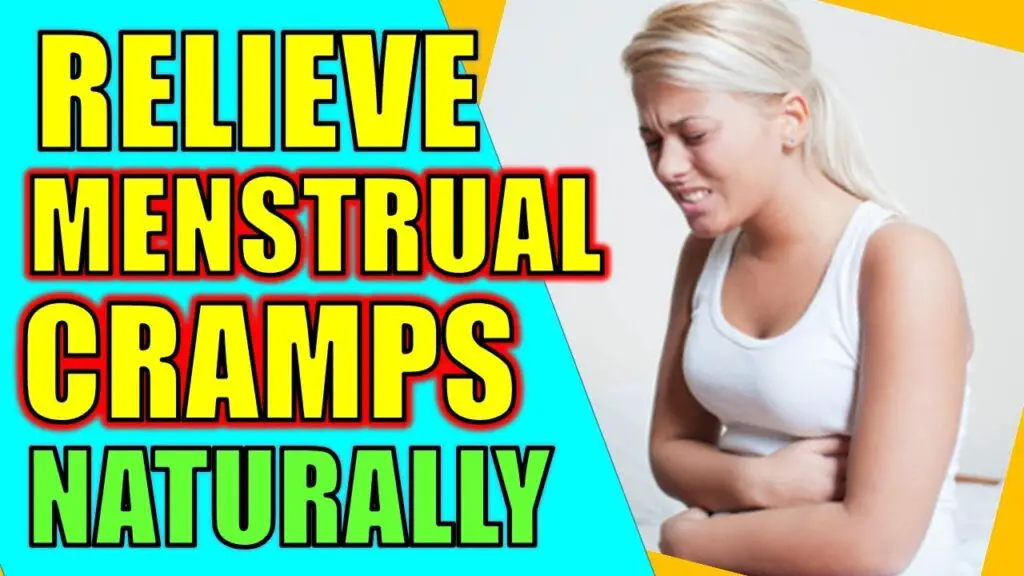Menstrual cramps, typically known as dysmenorrhea, are severe and frequent cramps that occur during a period. Dysmenorrhea can be primary or secondary.
Primary dysmenorrhea occurs from the beginning of the period and is typical in most menstrual cycles. Secondary dysmenorrhea is usually the result of an underlying condition that can cause severe menstrual cramps, such as endometriosis.
Painful menstrual cramps can be incredibly distracting and prevent us from participating in our usual activities and schedules. Luckily, there are many different natural remedies that can be used to help relieve menstrual cramps.
Cause of Menstrual Cramps
Menstrual cramps are caused by the uterus. When menstruating, the uterus contracts to shed the lining. Pain-causing prostaglandins trigger contractions, when higher levels of prostaglandins are found, there's a significant increase in the pain you feel with your period.
Endometriosis
Endometriosis is when the tissue of the uterus begins to grow outside in other areas, such as the fallopian tubes or the ovaries. Endometriosis can cause severe period pain in the abdomen and the back.
Other symptoms of endometriosis include pain during sex, infertility, excessive bleeding, nausea during your menstrual cycle, and pain with bowel movements. If you believe you may have endometriosis, it's important to seek a diagnosis from your doctor.
Adenomyosis
Adenomyosis is caused when the uterus thickens and enlarges due to uterine tissue growing into the muscle. Adenomyosis can cause severe pain during periods because the thick uterine lining is still expelled. Heavier cramping and flow sheds the lining.
Pelvic Inflammatory Disease
Pelvic inflammatory disease is a condition where the womb, ovaries, and tubes are infected. It's typically caused by an infection, such as gonorrhea and chlamydia. People with pelvic inflammatory disease typically experience heavy menstrual bleeding and painful cramps. They also experience pain when peeing, discomfort during sex, and pain in the abdomen.
Natural Remedies For Menstrual Pain
There are many natural remedies that can be taken for menstrual pain. Read on to learn of a few options to treat the cramping that occurs while you're on your period.
Heat


Applying heat to your abdomen or back may help with period pain. The heat can help with relaxing the uterus and reducing cramps. It may also stimulate more blood flow in the abdomen, which may help to relieve some of the pain you may be experiencing.
Use a hot towel, heat wrap, or hot water bottle to apply heat to your abdomen or back. You could also take a warm bath. Make sure that the heat is applied for around thirty minutes and that you're sat in a relaxed position.
Dietary Supplements
Fish Oil
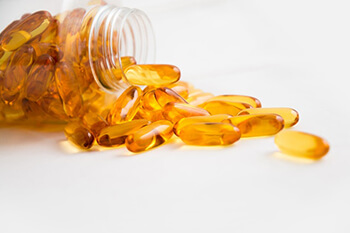

The omega-3 fatty acids found within fish oil help lower inflammation. This corresponds with significantly less pain during the menstrual cycle. Danish researchers found that it is important to balance omega-3 and omega-6 levels within the body to regulate inflammation. This may help ease bad period cramps.
Magnesium
Magnesium works much like heat. It helps reduce the amount of cramping and the level of prostaglandins within the body. Magnesium may also calm the nervous system, which not only helps with cramps, but with other period symptoms such as headaches and mood.
Magnesium can be taken in many different forms, such as tablets or a liquid. It's also found in dark leafy greens such as kale, in nuts such as cashews and almonds, and avocado.
Chasteberry
Chasteberry has been found to help produce progesterone in the body. Progesterone may help with period symptoms such as breast tenderness, mood swings, hot flashes, and pain. Chasteberry may also decrease levels of prolactin.
Prolactin is a hormone that's naturally released. When our prolactin levels are too high, our periods may be irregular. Decreasing the levels of prolactin will help regulate periods and prevent pain during menstruation.
Turmeric
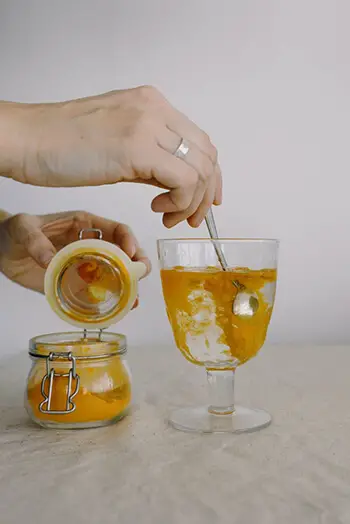

Turmeric has anti-inflammatory properties that may help with period cramps. Tumeric helps the uterine muscles relax, preventing painful cramps that occur during menstruation. You can supplement your diet with turmeric by ingesting it via capsules, in tea, or sprinkling it in food.
Boron
Adding boron to your diet may help decrease the length and severity of uterine contractions. Boron helps you absorb calcium and phosphorus, and research has found that this helps ease menstrual cramps.
You can buy boron supplements at supplement shops. Foods such as avocados and peanut butter also contain boron, so you may benefit from adding these foods into your diet regularly.
Calcium
Regular consumption of calcium has been found to help with muscle cramping. Calcium may also help with other symptoms of PMS such as mood, depression, and fatigue. Calcium can be taken via supplement or added naturally to your diet. Foods such as dairy, leafy greens, and sesame seeds are good sources of calcium.
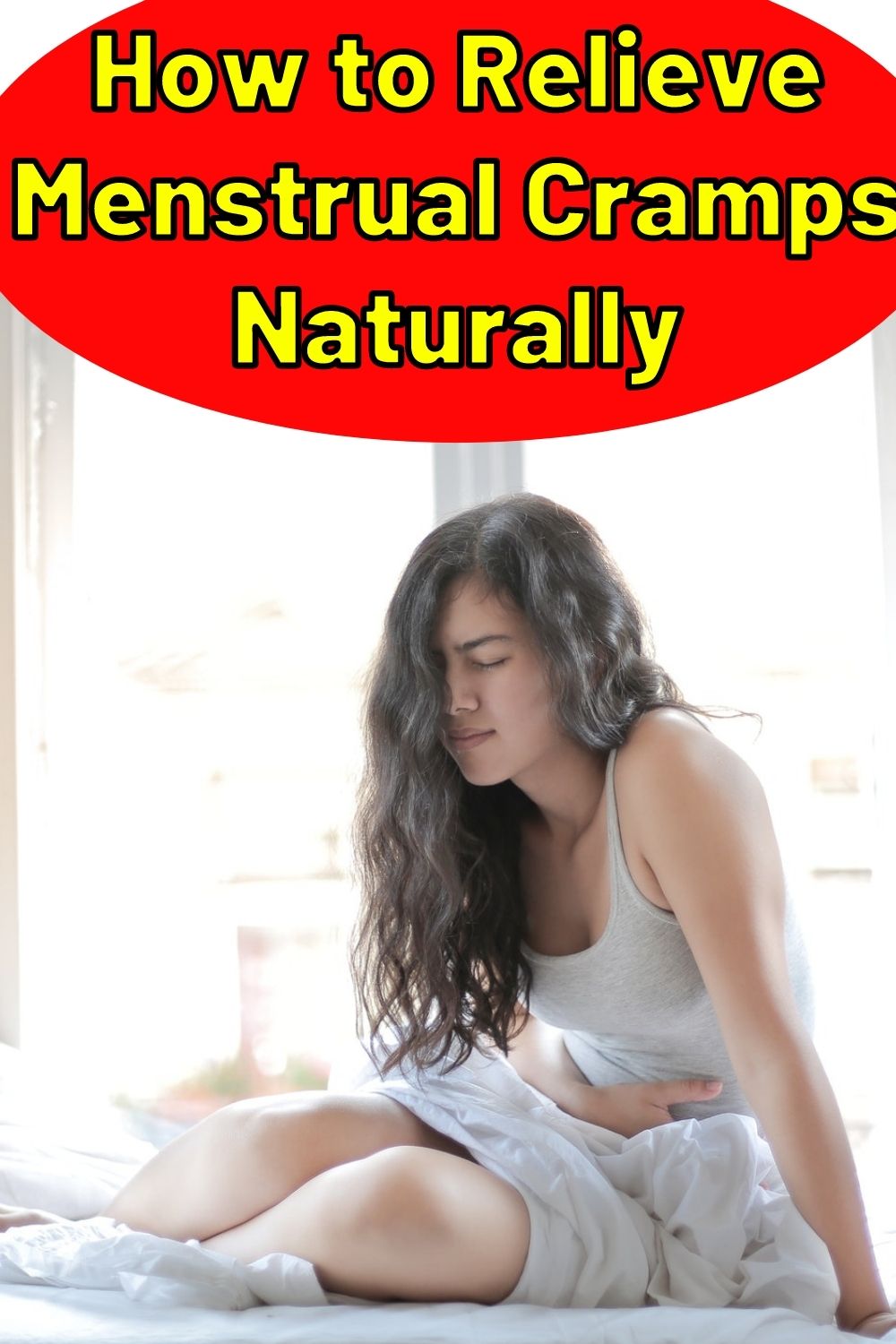

Changes To Your Diet
Certain dietary changes may help with period pain. By adding nutritious foods to your diet and eating less nutritious choices in moderation, you may be able to ease menstrual discomfort.
Brown Rice
Brown rice contains b vitamins and magnesium, which both help to ease menstrual cramps. The fiber found in brown rice may also ease symptoms of constipation during the menstrual cycle, which can add to the pain and cramping you may experience.
Leafy Green Vegetables
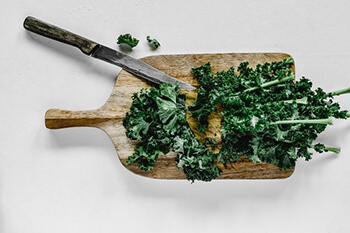

Dark leafy green vegetables contain iron, calcium, and magnesium. Magnesium helps with period cramps, while iron helps battle the fatigue you may feel during menstruation. Eating vegetables such as kale, spinach, and broccoli can be a natural way to help improve menstrual pain.
Water


Increasing water intake can help reduce water retention. Water retention can lead to painful bloating that can negatively impact period cramps. Be sure to drink enough water throughout the day during your cycle to help with hydration levels.
Fish and Flaxseed
Fish and flaxseed both contain omega-3. Omega-3 can help with the reduction of inflammation, and in turn, help with uterine cramps. It is commonly found in fish such as salmon and flaxseed. You can add flaxseed to pancakes, oatmeal, or smoothies.
Foods to Avoid
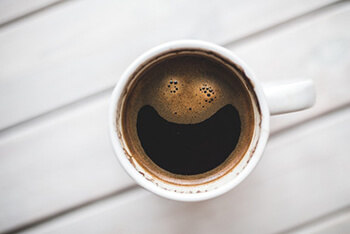

There are certain foods that should be eaten in moderation or avoided if possible during your period. Foods that are high in sodium may cause water retention and bloating, which can cause more pain during menstrual cramps.
You should drink coffee only in moderation. High levels of caffeine cause constriction of the blood vessels, which in turn can cause more cramping. Swapping coffee out for herbal tea is a great way to help with menstrual cramps.
Artificial sweeteners may disrupt hormones, and excess sugar can cause cravings that lead to poor food choices. If you're craving chocolate, opt for unsweetened dark chocolate to prevent blood sugar fluctuations that relate to mood swings.
Exercise
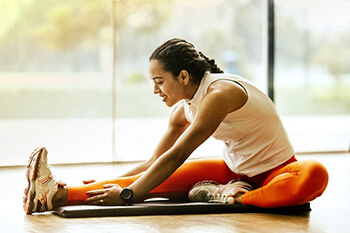

When you're experiencing menstrual cramps, exercising may be the last thing you'd like to do. However, exercise releases endorphins, which help reduce period pain. Endorphins block pain receptors and stop the uterus from contracting.
Exercise may also help with water retention, relieving symptoms of bloating that affect period pain. It may also help with mood stabilization and decrease your fatigue levels. It is recommended to do low-intensity exercises such as walking while on your period. Weight training may also be suitable at this time, but it's best to do so at a lower volume, opting for power instead of endurance.
Yoga


Certain yoga poses may help with pain relief. Yoga poses target areas that cramp during menstrual periods, and therefore may help with muscle contractions. It's also theorized that the emotional wellbeing aspect of yoga can help relax the body and mind, which may reduce pain.
Poses such as child pose, cat-cow, reclining twist, pigeon pose, and corpse pose are suggested to help with menstrual cramps. Yoga practitioners recommend that inverse poses are avoided during your period, though.
Acupuncture
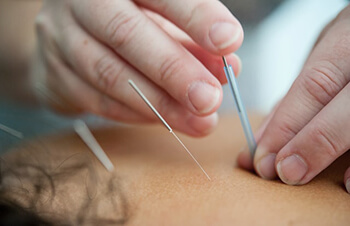

Some trials have found that acupuncture may help with symptoms of painful periods. Acupuncture uses thin needles to stimulate the muscles and nerves. Endorphins are typically released during an acupuncture session, which can help with cramping.
More research needs to be done on the efficacy of using acupuncture to relieve pain. However, it's a natural method and what we know so far suggests it may relieve menstrual symptoms as well as pain.
Essential Oils
Massaging essential oils into the abdomen may ease menstrual pain. Cinnamon, known for its anti-inflammatory properties, can be used in essential oil form to help ease period pain. Lavender essential oil has also been shown to help with period pain relief.
To use essential oils as a natural remedy, add a few drops to a carrier oil such as avocado or coconut oil, then gently massage into the abdomen. You can do this before your period starts to help with pain relief in advance.
Conclusion
By changing your diet and implementing natural relief methods, you can hep ease the pain from menstrual cramps.
Reduce the amount of sugar, alcohol and caffeine consumed during your period. Consuming leafy green vegetables can boost your iron, calcium and magnesium levels, all of which help with the reduction of menstrual cramps. Certain supplements with these vitamins and minerals can be used alongside a healthy diet to prevent and relieve cramps.
Exercising can be great for menstrual cramps as it helps with the production of endorphins and lessens menstrual pain. It can also combat fatigue, making you less likely to need caffeine to boost your energy levels.
While lifestyle changes are beneficial, using essential oils and a heating pad may also temporarily help relieve some of the pain. A heating pad helps with muscle contraction and stimulates blood flow to the abdomen. Essential oils help relieve tension thanks to their anti inflammatory properties.
By using a combination of dietary changes and natural remedies, you can manage painful periods with home remedies, and without the use of pain medication.

